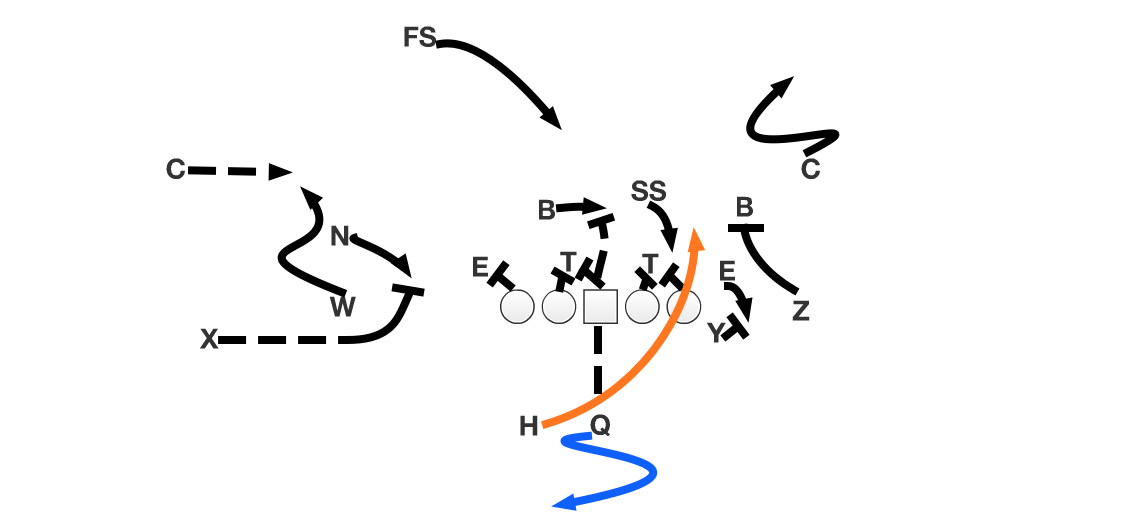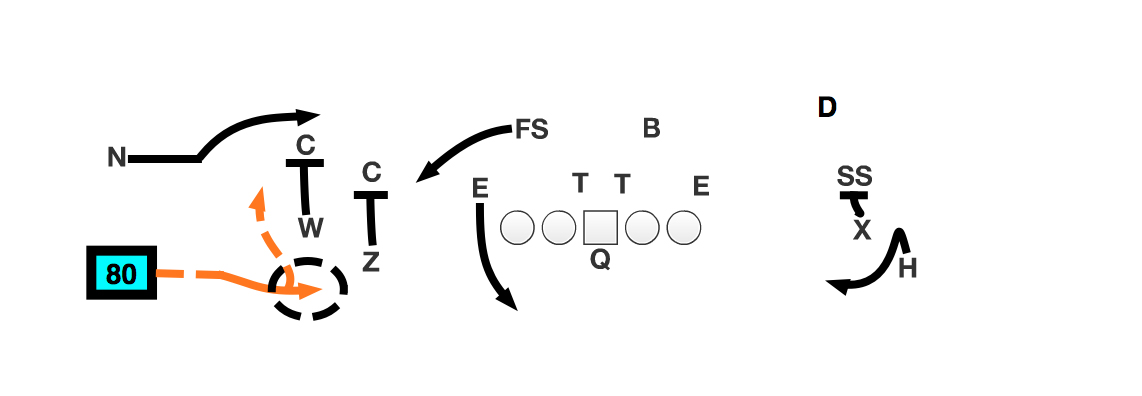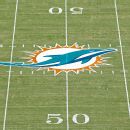How the Patriots converted both two-point tries
The New England Patriots’ pair of two-point conversion attempts in the fourth quarter of Super Bowl LI proved to be critical in their comeback win over the Atlanta Falcons.
Let’s go back to the two play calls to draw up how each went down. From the direct snap to James White to the wide receiver screen to beat man coverage, here’s how the Patriots used creativity and smart game-planning to win their fifth Lombardi Trophy on Sunday night in Houston.
Inside “Duo” (Direct Snap)

New England trailed the Falcons 28-18 after Tom Brady’s touchdown pass to Danny Amendola on a classic Patriots concept (a flat route paired with an outside clear-out). This was when offensive coordinator Josh McDaniels brought three-WR personnel onto the field and aligned the Patriots in an empty set before shifting White (H) into the backfield.
The play? It’s an inside “duo” run scheme. That’s a straight downhill run with the two double-teams against the Falcons’ four-man front. The right tackle, Marcus Cannon, blocks down on the strongside defensive tackle and doubles with the playside guard Shaq Mason. Move the defender off the ball. Big boy stuff.
With Martellus Bennett (Y) kicking out on defensive end Vic Beasley (E) and wide receiver Chris Hogan (Z) digging out the strongside linebacker, the Patriots can wash-out the strong side of the formation as the center, David Andrews, chips off the inside double-team to pick up linebacker Deion Jones (B).
However, McDaniels adds the wrinkle of the direct snap to White. For starters, it allows White to hit the line quicker, but this is where Brady also simulates the poor snap over his head. Why? To draw the eyes of the second-level defenders (linebacker and strong safety) before White drops his pads and follows the double-team block of Cannon and Mason. Get small in the hole and find some daylight as the strong safety, Keanu Neal, gets caught up in the mess of bodies.
Put the ball across the goal line and cut the lead to 28-20.
Wide receiver screen

This was a great call by McDaniels after White’s 1-yard touchdown run cut the Falcons’ lead to 28-26 late in the fourth quarter. Bring 10 or “Jet” personnel into the huddle (four wide receivers) and spread the field. Go empty versus the Falcons’ dime package (six defensive backs).
This is a classic man-coverage beater. And with the Falcons’ playing zero-man (no safety in the middle of the field), the Patriots can create some traffic at the point of attack.
With Amendola (No. 80) coming in motion to the core of the formation, and nickel back Brian Poole (N) giving ground — or gaining depth — to play for a possible pick route, both Julian Edelman (Z) and Hogan (W) block the two cornerbacks in coverage (C). This creates a clear lane for Brady to take one step and target Amendola (long hand-off) on the screen concept, called a “tunnel screen.”
Catch the ball and square the pads to the line of scrimmage, and with Poole stuck in the trash off the blocks from Edelman and Hogan, the Falcons defensive back can’t recover in time to keep Amendola out of the end zone. Even with the collision at the goal line, Amendola’s ability to immediately get up the field after the catch puts two points on the board.
That’s a great example of playing the defensive tendencies against four-WR personnel (zero-man) and calling a route scheme that beats the coverage based on the alignment of the defensive backs. This allowed the Patriots to tie the game 28-28 before winning another ring in overtime.




